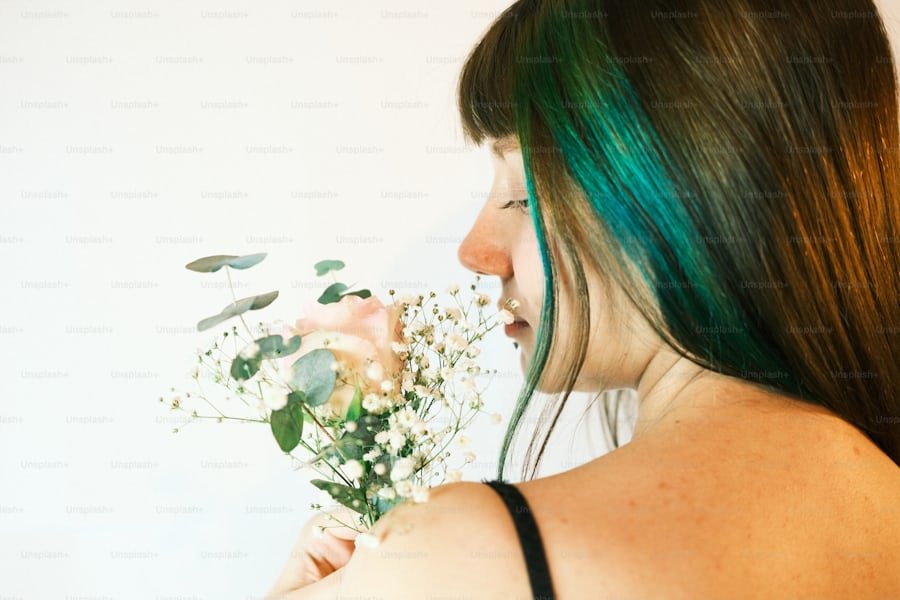In a world that’s increasingly focused on healthier, eco-friendly lifestyles, more people are turning to Natural Hair Dye Alternatives as a safer way to express themselves. Conventional chemical dyes, though popular for their efficiency, often come with risks to both personal health and the environment. As awareness grows about the hidden dangers of chemical hair dyes, individuals are now seeking gentler, sustainable options to maintain their vibrant hair colour without compromising their well-being.
Before diving into the world of Natural Hair Dye Alternatives, it’s essential to understand The Hidden Dangers of Chemical Hair Dyes: Impact on Health and the Environment. Many traditional hair dyes contain potentially harmful chemicals like ammonia, PPD (para-phenylenediamine), and resorcinol, which can damage your hair, irritate your skin, and even lead to more severe health conditions with long-term exposure.
Research has shown that repeated use of chemical hair dyes can contribute to allergic reactions, scalp sensitivity, and even increase the risk of certain cancers, such as bladder cancer. These risks are magnified for salon workers, who are exposed to chemical dyes regularly. Moreover, the environmental impact is staggering. The production and disposal of chemical hair dyes contribute to water pollution, as harmful substances can leach into the water supply, affecting aquatic life and ecosystems.
As we become more conscious of how our choices impact both ourselves and the planet, finding Natural Hair Dye Alternatives becomes not just a personal choice, but a responsible one.
Why Choose Natural Hair Dye Alternatives?
The appeal of Natural Hair Dye Alternatives lies in their gentle, nourishing properties. Unlike chemical dyes, which strip the hair of its natural oils and often leave it dry and brittle, natural dyes are derived from plants, herbs, and other organic materials that are not only safer but can also enhance the health of your hair.
For instance, henna—a popular natural dye—has been used for centuries to colour hair. It coats the hair shaft rather than penetrating it, helping to maintain moisture and protect the hair’s natural structure. Likewise, ingredients like indigo, cassia, and chamomile provide a variety of shades, from deep black to golden blonde, all without the damaging effects of synthetic dyes.
By choosing natural options, you’re also protecting the environment. Plant-based dyes decompose more easily, reducing the strain on ecosystems compared to their chemical counterparts. This shift toward sustainability is key in combating the negative environmental impact caused by the widespread use of synthetic dyes.
Popular Natural Hair Dye Alternatives
There are a number of Natural Hair Dye Alternatives available today, catering to those looking to achieve vibrant, lasting hair colour without the associated health risks. Here are some of the most popular options:
Henna: Henna is one of the most well-known natural dyes and has been used for thousands of years. It produces a reddish-orange tint but can be combined with other plants like indigo to create different shades. Henna is not only safe but also strengthens and conditions the hair, leaving it healthier with repeated use.
Indigo: Indigo is often used in combination with henna to create darker shades of brown and black. It is derived from the leaves of the Indigofera plant and has been traditionally used for fabric dyeing. When applied to hair, indigo provides a rich, deep hue without the harmful chemicals found in synthetic black dyes.
Cassia: Cassia obovate, also known as neutral henna, is ideal for those with lighter hair who want to enhance shine and add a subtle golden tint. While it doesn’t dramatically change hair colour, cassia offers conditioning benefits and leaves hair feeling silky and healthy.
Chamomile: Chamomile is another excellent option for lightening hair naturally. Often used as a tea or rinse, chamomile gives blonde and light brown hair a natural, sun-kissed glow over time. It’s also incredibly gentle on the hair and scalp.
Beet Juice and Carrot Juice: For those seeking redder tones, beet and carrot juices can be effective natural dyes. While the colours are not as long-lasting as chemical dyes, they provide a soft, reddish hue that’s easy to maintain with repeated treatments. Plus, these vegetable-based dyes are nourishing for both hair and scalp.
How to Use Natural Hair Dye Alternatives at Home
Using Natural Hair Dye Alternatives can be a rewarding experience, but it’s essential to know the proper techniques to achieve the best results. Natural dyes often require more time and patience than chemical dyes, as the colour builds up gradually and may need to be reapplied every few weeks to maintain vibrancy.
To start, always do a patch test to ensure you aren’t allergic to any ingredients in the natural dye you’re using. Then, prepare the dye by following the instructions specific to the product. For example, henna needs to be mixed with water or tea and allowed to sit for a few hours to release the dye. Indigo, on the other hand, should be mixed with water right before application and applied immediately.
Once the dye is ready, apply it generously to clean, damp hair, making sure to cover all strands. Natural dyes work best when left on for a longer period, often two to six hours, depending on the desired intensity of the colour. After rinsing, avoid shampooing for 48 hours to allow the colour to set fully.
While natural dyes don’t offer the instant results of chemical products, the gradual colouring process is much kinder to your hair and scalp, leaving you with healthy, vibrant hair over time.
The Environmental Benefits of Choosing Natural Hair Dye Alternatives
As the world faces escalating environmental challenges, the switch to Natural Hair Dye Alternatives represents a small but meaningful step towards a greener planet. The production and disposal of chemical hair dyes are responsible for significant amounts of pollution. Ammonia, resorcinol, and other harsh chemicals in conventional dyes often find their way into water systems, damaging aquatic ecosystems and contributing to long-term environmental degradation.
Plant-based dyes, on the other hand, are biodegradable and non-toxic. When washed away, they don’t release harmful chemicals into the water, and their production generally has a smaller carbon footprint. Many manufacturers of natural hair dyes are also committed to sustainable farming practices, using organic ingredients and reducing waste.
By choosing Natural Hair Dye Alternatives, you are actively contributing to a cleaner, healthier environment while also protecting your personal health.
Transitioning from Chemical to Natural Dyes
Switching from chemical dyes to Natural Hair Dye Alternatives can be a gradual process, especially if you’ve been using synthetic dyes for many years. The key to a smooth transition is patience and proper care for your hair as it adjusts to the new routine.
Start by allowing your hair to grow out for a few weeks, giving it time to recover from previous chemical treatments. As you begin using natural dyes, be aware that the results may not be as immediately dramatic as those from chemical dyes. However, the trade-off is healthier hair in the long run, free from the damage and risks posed by chemical ingredients.
During this transition, it’s important to nourish your hair with natural oils and conditioners, helping to restore moisture and repair any damage caused by previous dye use. Over time, your hair will not only look great but will feel stronger and healthier as well.
Conclusion: Embrace the Change with Natural Hair Dye Alternatives
In a world where health and environmental consciousness are becoming more important, Natural Hair Dye Alternatives offer a safer, more sustainable way to colour your hair. By opting for plant-based dyes, you can avoid The Hidden Dangers of Chemical Hair Dyes: Impact on Health and the Environment, while enjoying the benefits of healthy, vibrant hair.
Whether you’re drawn to the rich hues of henna, the deep tones of indigo, or the golden glow of chamomile, there’s a natural option to suit your needs. Embrace this change for your hair and the planet—it’s a decision you can feel good about in more ways than one.











